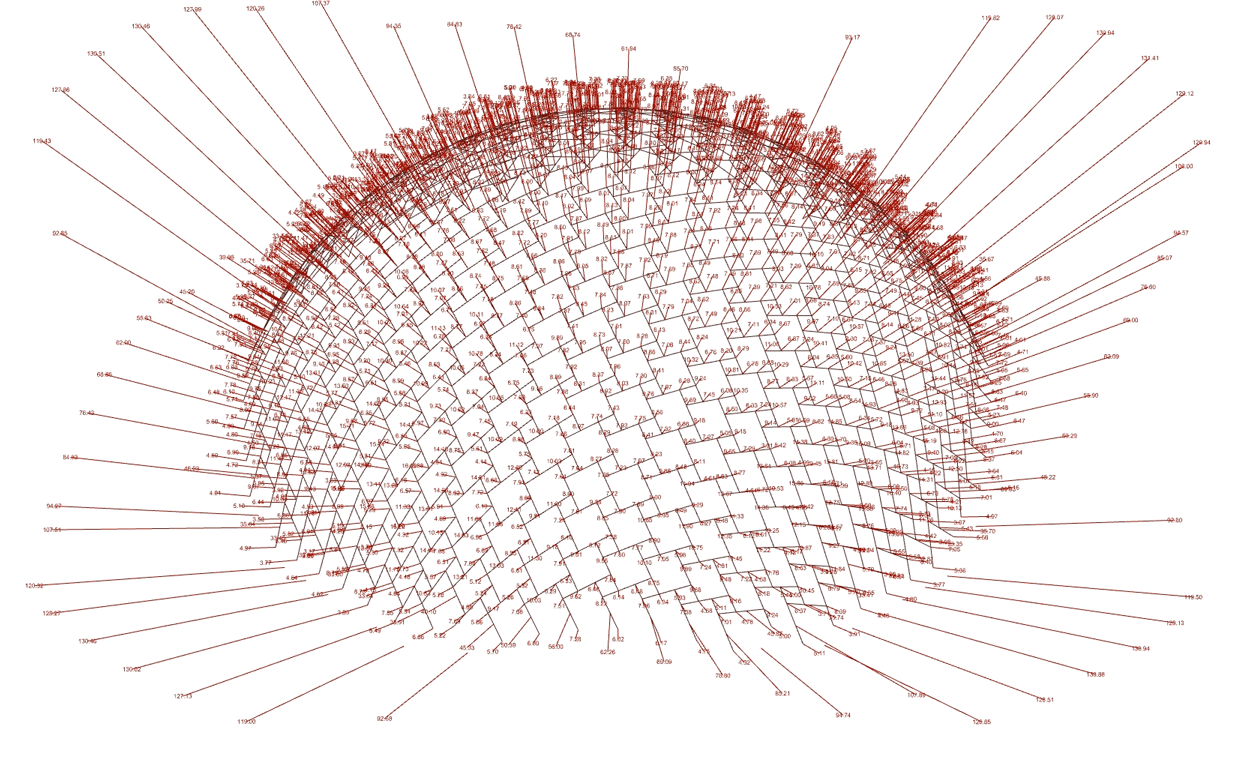
Shanghai Bamboo Pavilion
Shigeru Ban Architect
2018
Feasibility studies for reciprocal frame structure from planar materials
Shanghai Bamboo Pavilion at Tonji University
The reciprocal frame structure was constructed in collaboration by Ban Laboratory at Keio University, Japan and Tonji University, China. A computational model was created to better understand the behavior of this structure before construction.
Several challenges were identified at the beginning of the study. Rectangular cross-section of materials prevent prefect assumption of tangency between frame element in compare to other research using tubular element. A shallow dome structure, thick material and a pre-determined engagement length require large deformation of frame elements and internal strain. Rectangular projection on the spherical geometry led to high eccentricity of surface subdivision.
The circle-tangent model was created initially to replicate results from previous research and the bend-conform model was created specifically for this project. Both adopt a simple gradient-decent optimization to calculate proper engagement length/deformation to achieve perfect contact between frame element.
Project Team: Harano Yasunori(SBA), Jun Fujisaki(SBA), Anthony Chu(SBA)
Ref: Parigi, D. “Advances in Design and Fabrication of Free-Form Reciprocal Structures.” Structures and Architecture, 2016, pp. 290–297., doi:10.1201/b20891-37.
Methodology
1. Spherical Dome
2. Subdivision with singularity
3. Mesh Relaxation with constant edge length

4-1. Circle-Tangent
4-2. Bend-Conform


Frame element is bent until frame element touch properly.
Circle radius is increase/ decrease iteratively until frame elements touch.


Pre-optimization
Member location determined by original mesh vertices and not touching.
Optimized
Members with modified engagement length now fully tangent to each other.Median difference to target > 0.0002%
Curvature Adaptation

Engagement length adapt to varying surface curvature, allowing the approximation of an reciprocal frame structure to free form shell geometry. Spikes showing deviation from target distance.


Parigi, D. “Advances in Design and Fabrication of Free-Form Reciprocal Structures.” Structures and Architecture, 2016, pp. 290–297., doi:10.1201/b20891-37.












